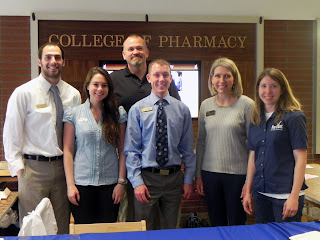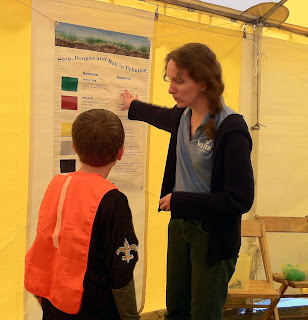About Newsroom
Recent News
- IISG looks back on 30 years of AIS outreach
- New step-by-step guide and veterinary brochures expand UnwantedMeds.org resources
- The Helm magazine features teachers and scientists setting sail on Lake Michigan
- The Know Your H₂O Kit gets a real-world lab test by middle schoolers
- IISG has a long history of supporting teachers through Great Lakes activities and resources
IISG Instagram
This fall, our team took advantage of several opportunities to showcase our engaging educational programs at outreach events.
One highlight included the Great Plankton Race, where participants built plankton models and tested various adaptations that help this vital part of the food web survive.

Illinois-Indiana Sea Grant has created another resource for students in the Great Lakes region to engage with real-world, professional water quality testing equipment. Currently, the Know Your H₂O Kit is being pilot tested in five classrooms, and for one Ohio teacher, it’s a hit for her and her students.
“The lessons have been incredibly useful,” said Shari Insley, a science teacher in North Olmsted, Ohio. “They not only aligned well with our Ohio 7th-grade science curriculum but also brought concepts to life in a way that deepened students’ understanding. For many students, this was their first time using scientific tools to test real water samples, and it sparked curiosity about local water systems and environmental stewardship.”
Learn more at the link in bio.

This Halloween, we’re diving into the eerie depths of the Great Lakes.
Each lake has its own spooky story:
🕯️ Lake Superior hides ghost ships beneath its icy waves...
🦴 Lake Michigan whispers tales of vanishing beaches…
🌉Lake Huron hides prehistoric hunting camps on a lake bottom ridge...
🧪 Lake Erie bubbles with algal blooms that glow like potions...
🦠 Lake Ontario was first to host strange creatures like the blood sucking sea lamprey.
Never fear, we have resources to help you make these fascinating topics less frightening at iiseagrant.org/education.

IISG is seeking a talented and passionate person to join our team as a research & reporting administrator. This is an exciting leadership opportunity for someone interested in managing a competitive research portfolio and leading our annual reporting process to make a real impact on the health and vitality of our Great Lakes ecosystems and communities.
The successful candidate will be responsible for overseeing our research competitions, spearheading data collection and reporting for our ~$5 million program, and supervising a small team of dedicated staff.
Interested? Learn more at the link in bio.



